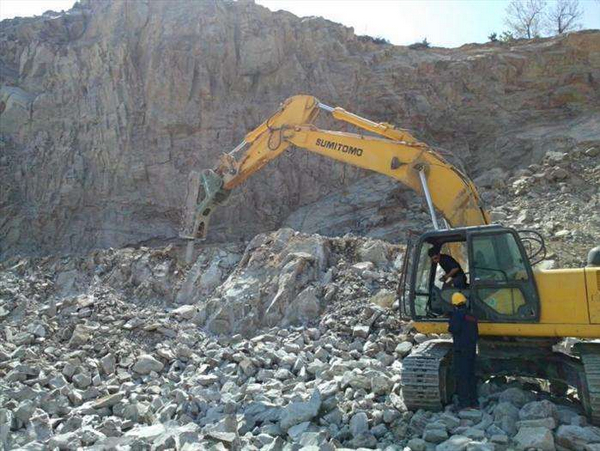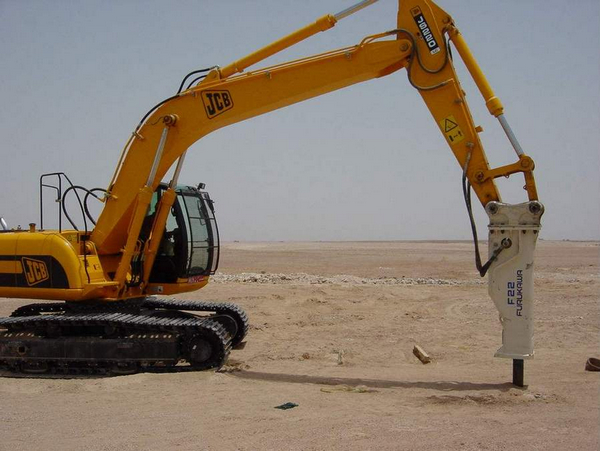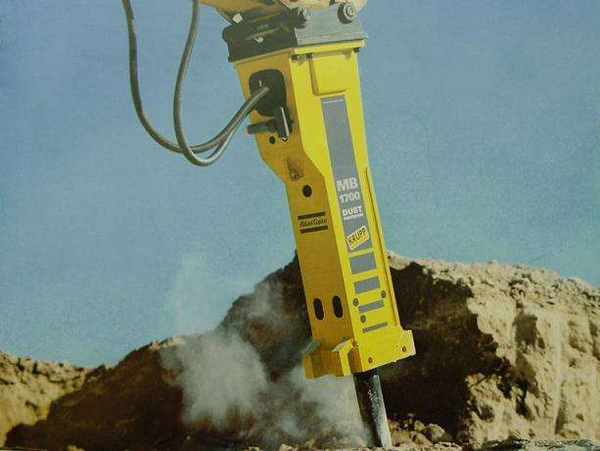> Overview: News
> Overview: Service
> Overview: About
A hydraulic breaker is one of the most
commonly used attachments for excavators, frequently required for demolition,
mining, and urban construction projects. How should hydraulic breakers be
properly maintained and serviced? How should they be correctly used? These
questions are of critical importance.

Maintenance
Given the harsh operating conditions
hydraulic breakers face, proper maintenance can reduce machine failures and
extend their service life. In addition to maintaining the main machine
correctly, the following points should also be noted:
1. Visual Inspection
Check if any bolts are loose; inspect if
the connecting pins are excessively worn; verify if the gap between the chisel
and its sleeve is normal; and check if there are any oil leaks from the
hydraulic breaker or its piping.
2. Lubrication
Lubricate the lubrication points of the
working components before each operation and after every two consecutive days
of continuous operation.
3. Hydraulic Oil Replacement and
Inspection
The hydraulic oil for engineering machinery
using a hydraulic breaker should be replaced after 600 hours of operation.
Additionally, ensure the hydraulic oil temperature remains below 800°C.
The choice of hydraulic oil directly
impacts the efficiency of the hydraulic breaker. In summer, anti-wear 68#
hydraulic oil is recommended; in winter, anti-wear 46# hydraulic oil is
recommended.
Select hydraulic oil appropriately based on
the specific working environment of the equipment. Using contaminated hydraulic
oil may cause malfunctions in the breaker and the main body of the construction
machinery, as well as damage to components. Therefore, please pay special
attention to the quality of the hydraulic oil.

Usage
Proper operation can improve the efficiency
of the breaker and extend its service life. The following are important
operational precautions:
1. Before each use, inspect the high-pressure
and low-pressure oil lines for leaks or loose connections. Additionally,
regularly check other areas for leaks to prevent oil lines from detaching due
to vibration, which could cause malfunctions.
2. During operation, the chisel should always
remain perpendicular to the rock surface and be firmly pressed against it.
After breaking, immediately cease operation to prevent empty strikes.
Continuous aimless impact may damage the front section of the breaker and cause
severe loosening of the main bolts, which could potentially damage the main
unit itself.
3. Do not shake the chisel rod during breaking
operations, as this may cause the bolts and chisel rod to break.
4. It is strictly prohibited to operate the
breaker in water or muddy conditions. Except for the chisel rod, the front
guard of the breaker must not be submerged in water or mud.
5. When breaking larger hard objects (rocks),
start from the edge. Regardless of the size or hardness of the rock, starting
from the edge is usually the most feasible approach. If continuous striking at
the same point for over a minute fails to break the object, change the striking
point and try again.

2025-01-21
2020-07-08
2020-08-24
2020-01-21
2019-12-25
2019-11-01
2021-02-01
2020-10-26
2021-01-14
2020-12-11
2020-07-04
2020-09-30